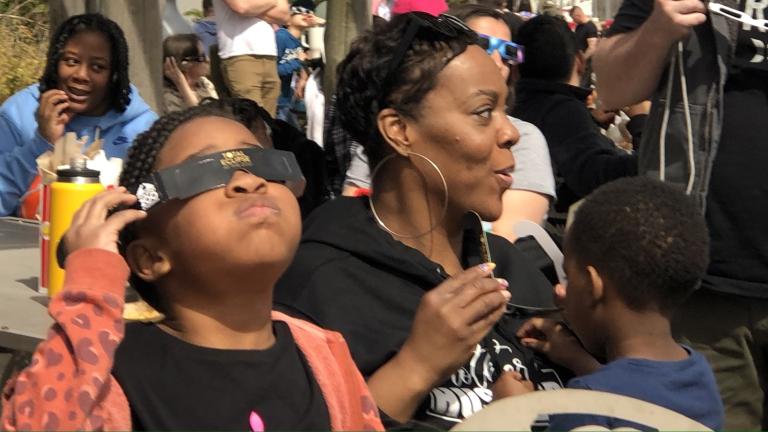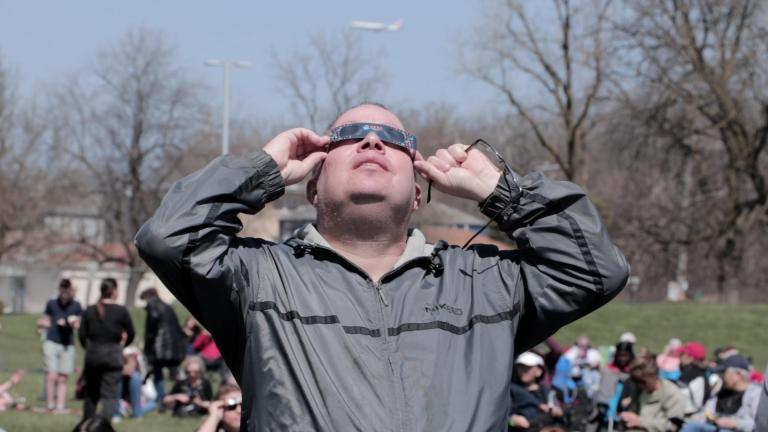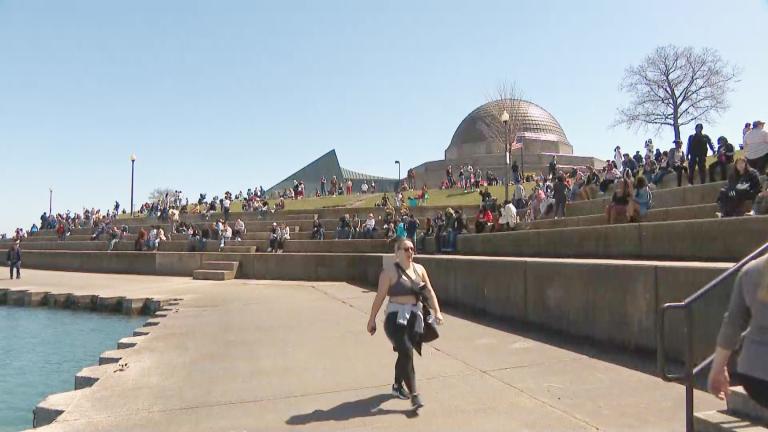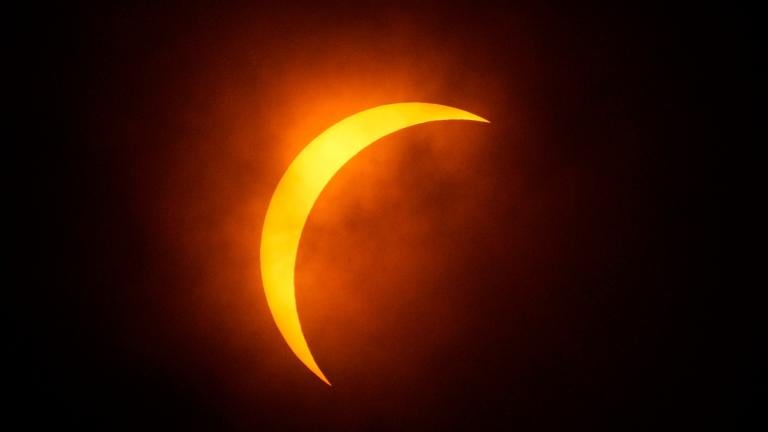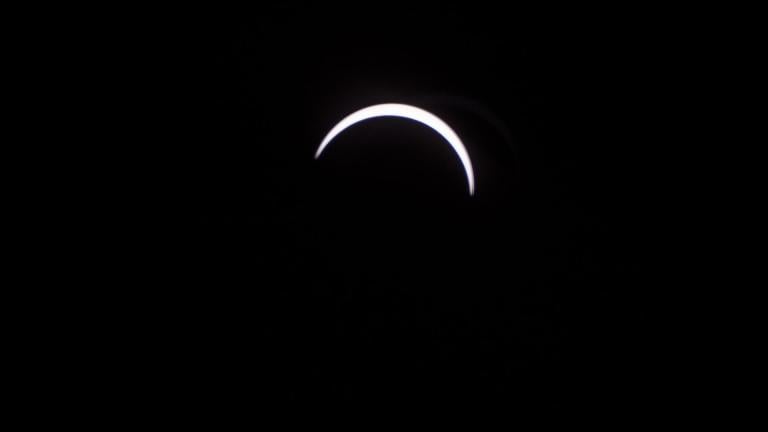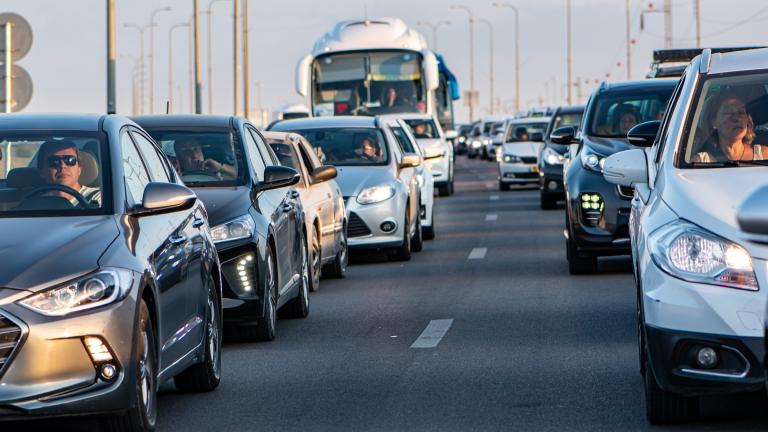(Video produced by Nicole Cardos)
The Great American Eclipse is almost here and while some people may be wondering “what’s the big deal,” excitement for others is reaching fever pitch.
Count Michelle Nichols in the latter camp.
It will be her third total solar eclipse and no, it never gets old, said Nichols, director of public observing at the Adler Planetarium.
“Every time is an amazing time,” she said. “Though I may be a little more geeked out than most people.”
The fact that Illinois will witness its second total solar eclipse in seven years is anything but ho-hum, she said, especially considering the state had undergone a 310-year eclipse drought prior to 2017.
As a professional skywatcher and eclipse veteran, Nichols has plenty of advice for people hoping to catch a glimpse of the April 8 event. Here are her top tips on maximizing the experience.
Shoot for the Moon
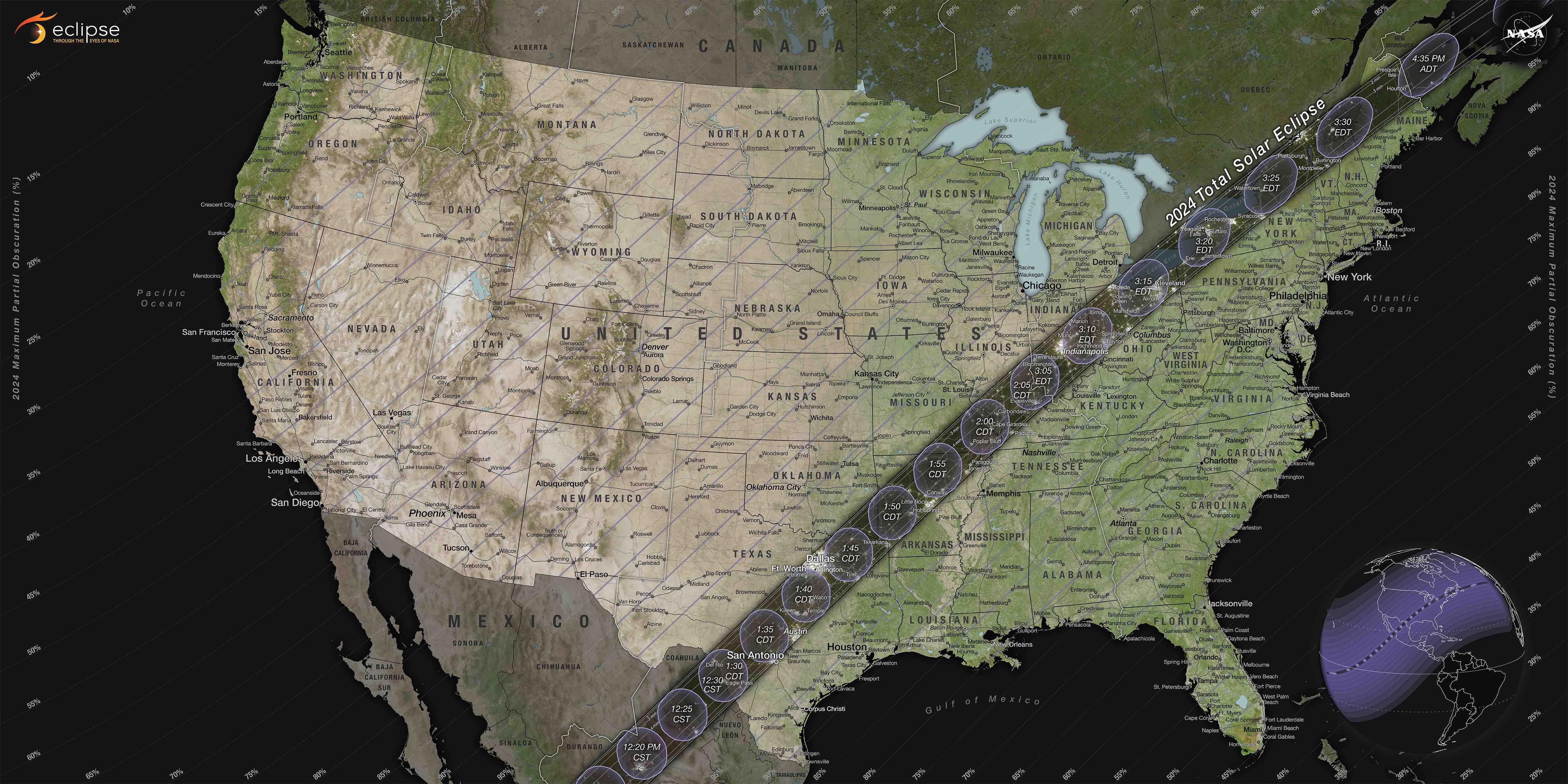 A map of the path of totality for the April 8 solar eclipse. (NASA's Scientific Visualization Studio)
A map of the path of totality for the April 8 solar eclipse. (NASA's Scientific Visualization Studio)
“Go to totality if you can,” Nichols said.
The “path of totality” is the track the moon’s shadow will follow across Earth. Areas within the upcoming eclipse’s roughly 125-mile-wide path of totality will be covered in total darkness for varying amounts of time. Outside of this path, people will only view a partial eclipse.
The difference between totality and a partial eclipse is literally the difference between night and day, she said.
In 1999, Nichols was part of an Adler tour group that traveled to the Black Sea to catch a solar eclipse — her first — crossing central Europe.
“It was insanely amazing,” she said. “What I saw in the sky, you can immediately understand why people in the past were terrified and awestruck. These common objects in the sky suddenly look different. It’s a sensory experience — it’s auditory, it’s visual, it’s feeling the temperature drop.... That doesn’t happen (even) at 99%.”
Nichols sobbed during totality, a common reaction she’s at a loss to explain. “It’s so interesting. Books have been written attempting to understand why.”
What’s particularly notable about the 2024 eclipse, she said, is that the path of totality covers largely populated, easily accessible parts of the U.S.
Southern Illinois is smack in the path of totality, and so is central Indiana, including Indianapolis.
“It’s not that far away,” Nichols said. “Go try to see it.”
(Can’t travel? We’ve got you covered with local viewing events, below.)
Check the Forecast
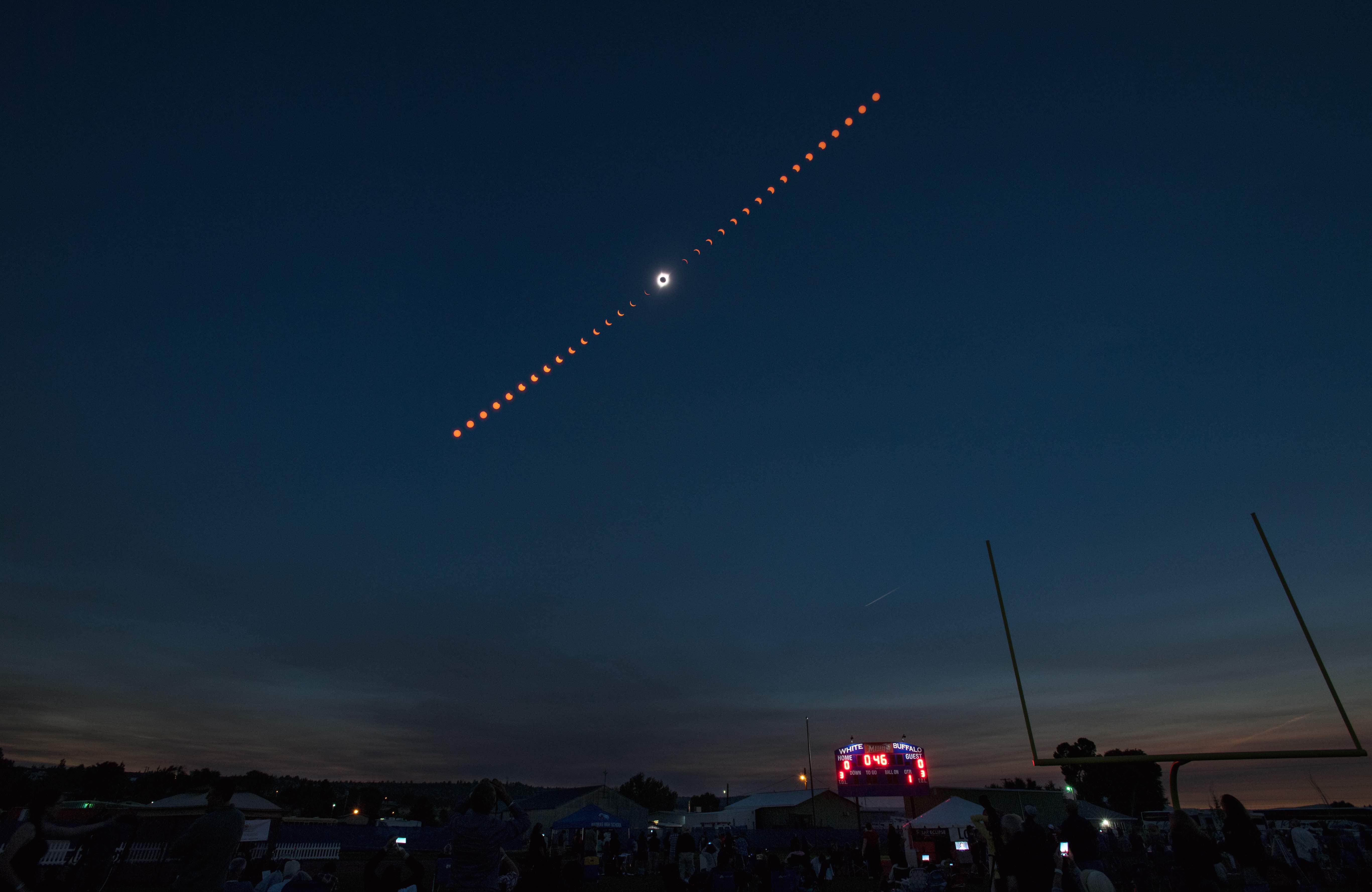 A composite photo of the various phases of the Aug. 21, 2017 total solar eclipse. (NASA / Aubrey Gemignani)
A composite photo of the various phases of the Aug. 21, 2017 total solar eclipse. (NASA / Aubrey Gemignani)
Nichols traveled to Carbondale, Ill., for the August 2017 eclipse, and she'll be there again next week, co-hosting an eclipse event at Saluki Stadium on the campus of Southern Illinois University.
She's already mentally preparing herself for uncooperative weather, ie, clouds.
"I keep telling myself, 'It's April in the northern hemisphere. We get clouds.'"
Thin clouds or fast-moving puffy clouds won't spoil the show, but persistent, heavy cloud cover will.
"It all depends on local weather conditions," Nichols said. "Earth sometimes gets in the way of seeing an eclipse."
And sometimes, an eclipse can be its own worst enemy. In 2017, it was a hot and humid day in Carbondale, and as totality approached, clouds formed due to the sudden drop in temperature.
"I can't say I truly saw totality. I kind of saw it through some clouds at the start. A half hour after totality, the clouds were gone," Nichols said.
What she did see was an unusual eclipse phenomenon called "shadow bands," shimmering ripples of light along the ground. That, coupled with the experience of being surrounded by 14,000 other people looking up at the sky, was its own kind of magic, she said.
Stay in the Moment
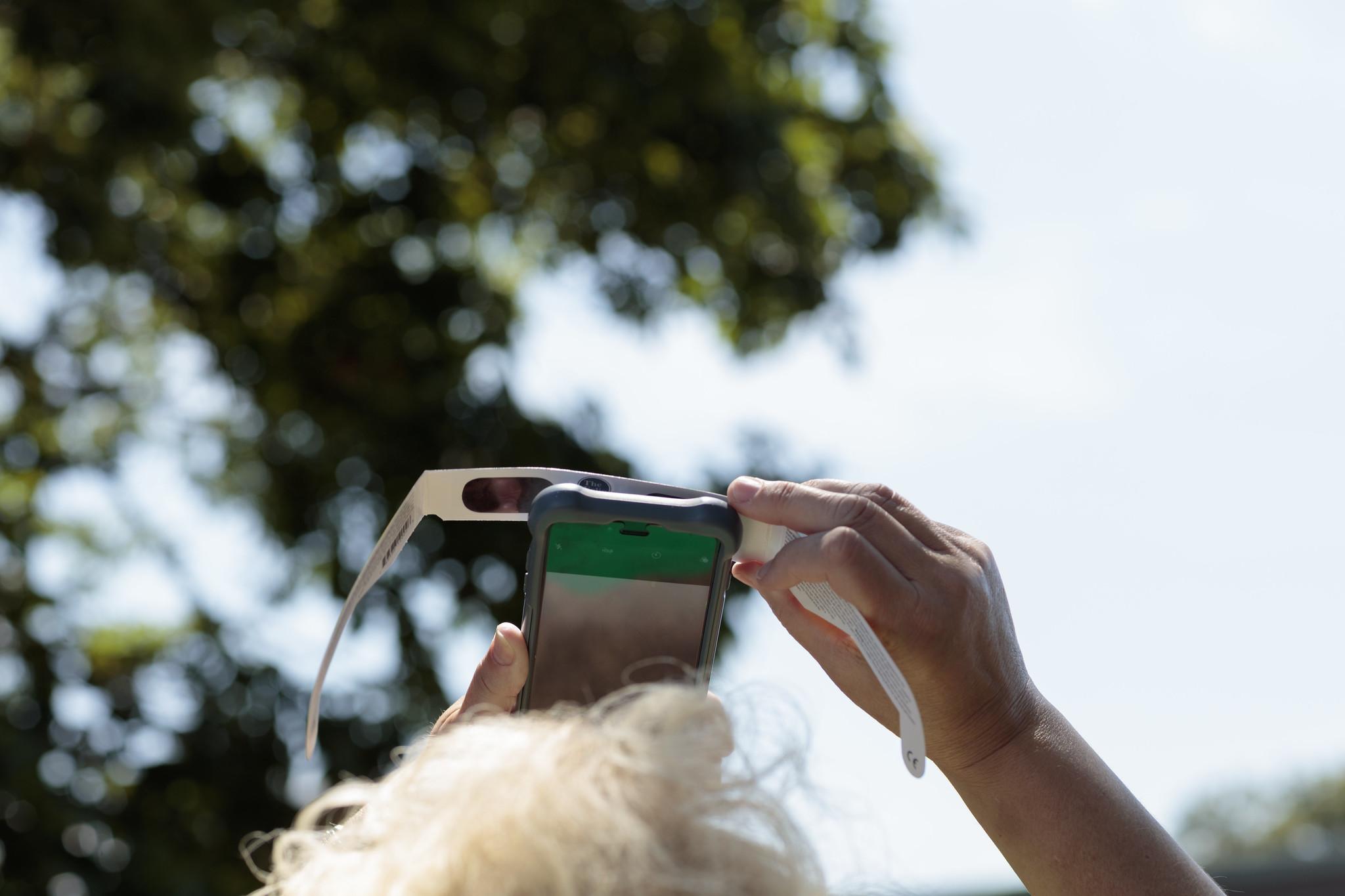 Heads up, smartphone cameras need eclipse filters too. (National Park Service / Flickr Creative Commons)
Heads up, smartphone cameras need eclipse filters too. (National Park Service / Flickr Creative Commons)
From her first eclipse in 1999 to her second in 2017, Nichols witnessed a revolution few could have predicted — the rise of the smartphone.
“What we saw in 2017 was that people wanted to take pictures,” she said.
Photographing an eclipse is challenging. For those intent on documenting the event, Nichols recommends making the attempt during the partial eclipse phase.
Keep in mind, cameras need filters too. Nichols’ hack is to rep a pair of eclipse glasses in half and put one of the lenses over a phone’s camera.
The “silvery” side of the eclipse filter should be facing out and it should be flush with the camera, so the phone might need to be removed from its protective case, she added.
But during totality, put the phone away, Nichols said.
“You do not want to waste those precious minutes fumbling with a camera,” she said. “It’s so not worth it to try to take a picture.”
Video: Joining “Chicago Tonight: Latino Voices” are Joe Guzman, founder and CEO of Chicago Astronomer and a NASA ambassador, and Lou Mayo, a NASA scientist and astronomy professor at Marymount University. (Produced by Sean Keenehan)
Additional Eclipse Resources
Protect Your Eyes
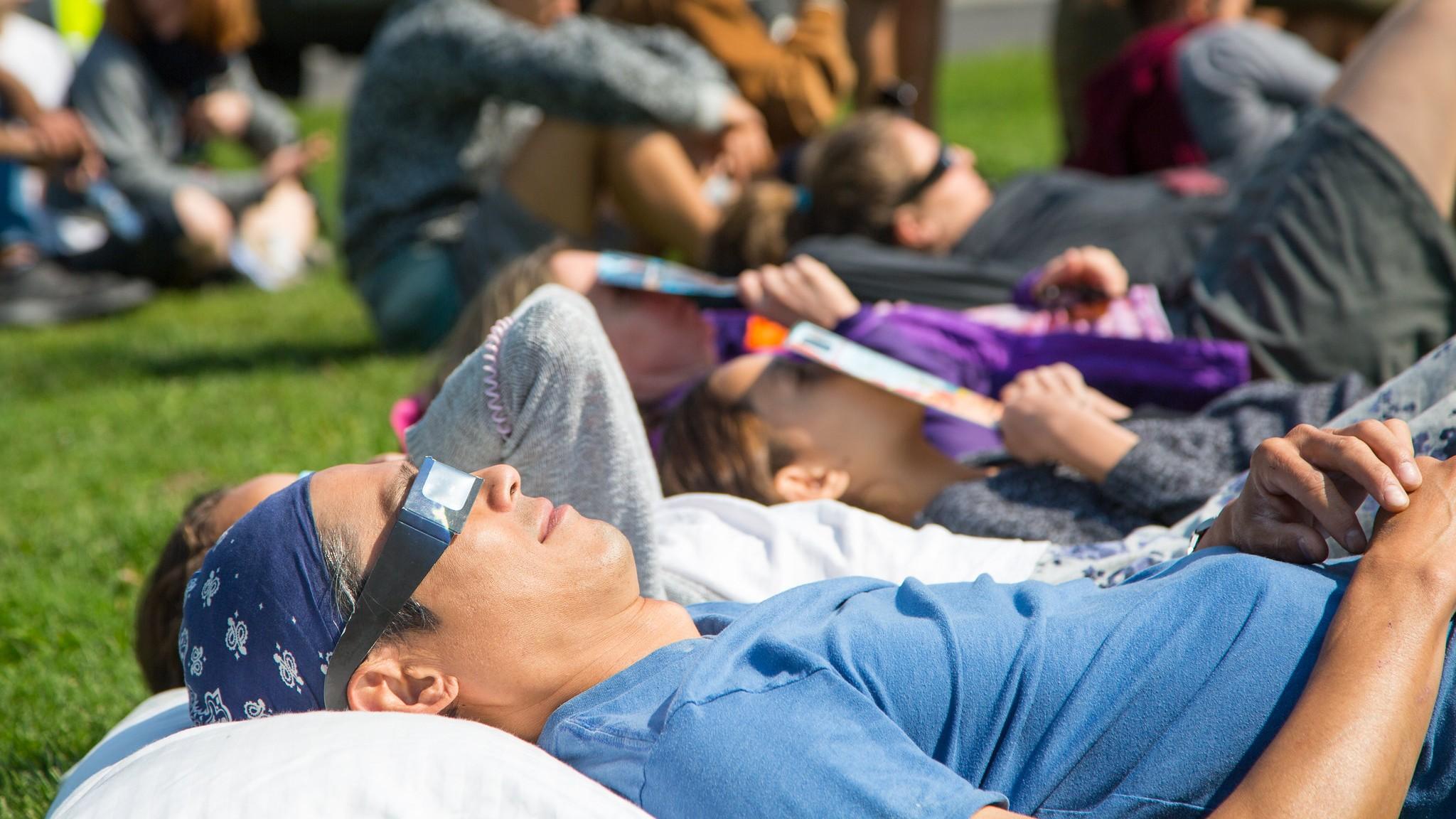 (National Park Service / Flickr Creative Commons)
(National Park Service / Flickr Creative Commons)
The eclipse will take place over several hours as more and more of the sun becomes shadowed by the moon, and then as the process reverses following totality.
At any point other than totality, people will need to look at the sun through special eclipse glasses or solar filters. Some viewing sites will be handing out the filters, while supplies last.
Another option is to purchase eclipse glasses from a reputable vendor, though some suppliers are already sold out and shipping deadlines are fast approaching.
Travel Smartly
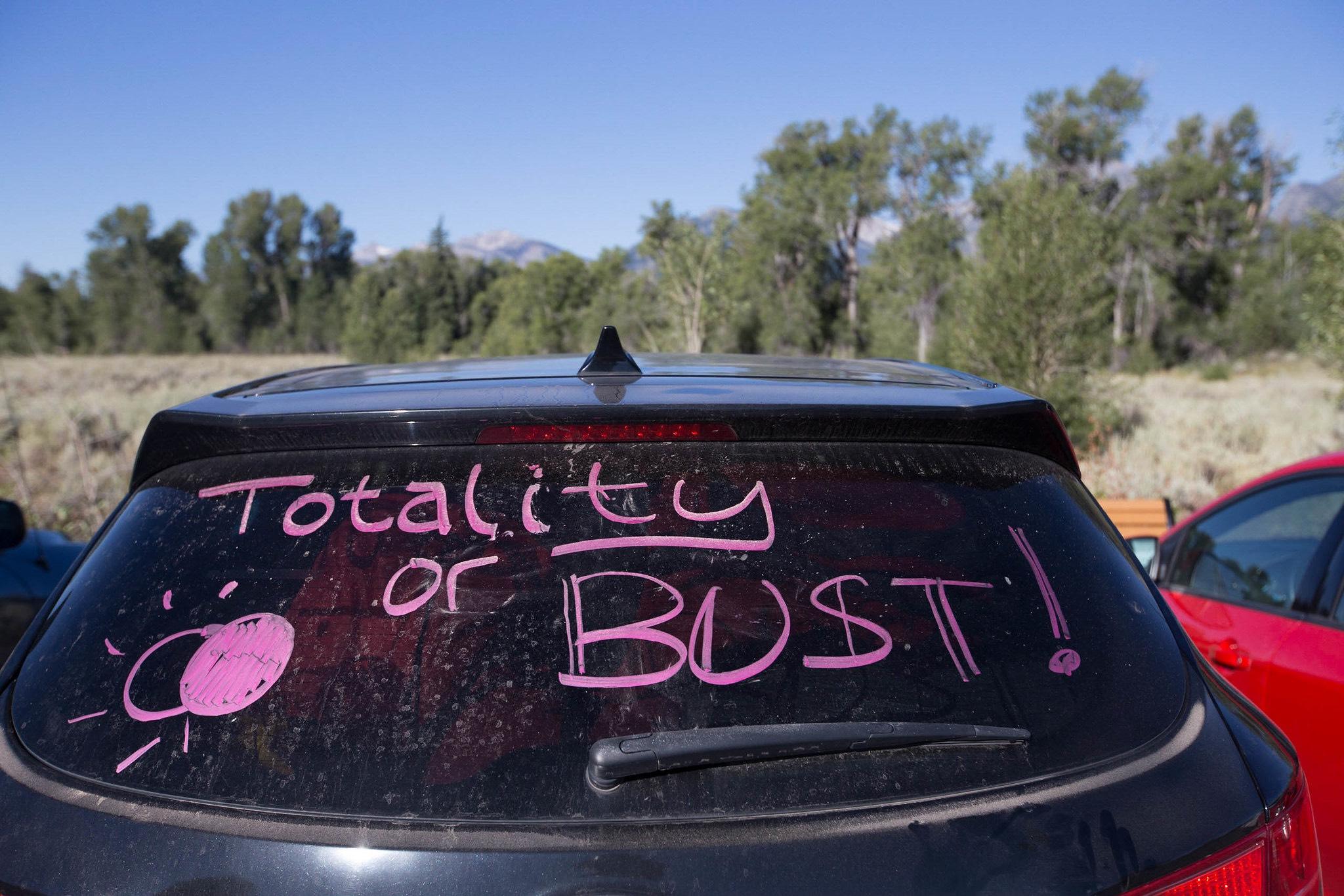 (National Park Service / Flickr Creative Commons)
(National Park Service / Flickr Creative Commons)
Between 100,000 to 200,000 visitors are expected to converge on southern Illinois to witness the eclipse, and then create a massive traffic jam as they all exit en masse after the big event.
The Illinois Department of Transportation is warning people to expect heavy congestion in the hours immediately following the eclipse, particularly on I-57, U.S. 45, Illinois 1, I-64 and I-70. Officials are encouraging motorists to be patient and to plan ahead — make sure the gas tank is full and be sure to have water and snacks in the car.
For those who happen to be on the road while the eclipse is in progress, IDOT is all but pleading with drivers to resist the temptation to take photos or videos while driving. And don’t attempt to drive while wearing eclipse glasses.
Stopping on the interstate or shoulder is also strongly discouraged by IDOT. Better to exit the roadway and find a safe place to park and enjoy the eclipse.
IDOT is also reminding drivers to turn on headlights during the eclipse.
Where to Watch
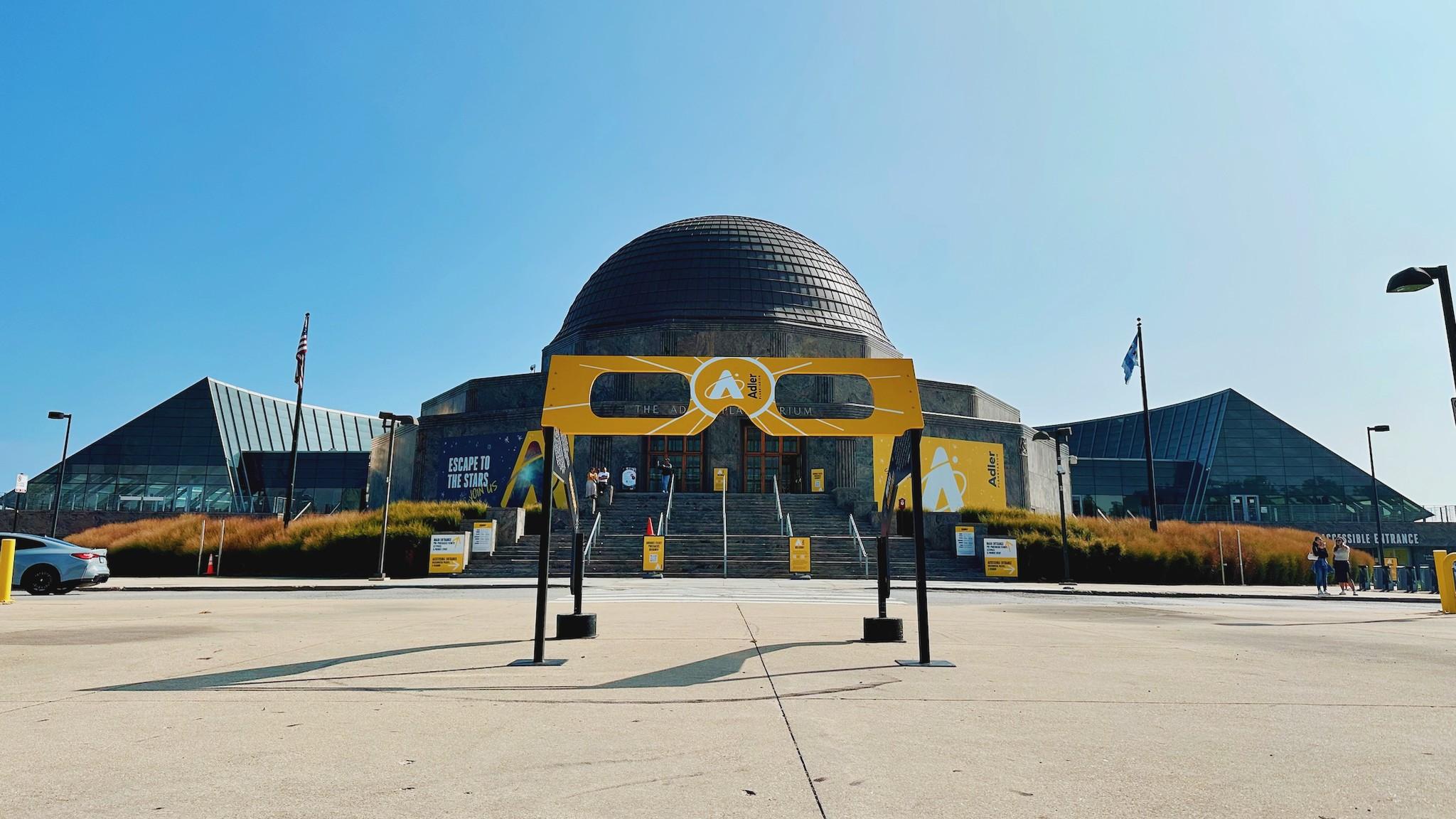 (Adler Planetarium / Facebook)
(Adler Planetarium / Facebook)
For those who can’t or don’t want to travel, and are content to view a partial eclipse, there are plenty of viewing opportunities in the Chicago area. We’ve rounded up several options.
— Adler Planetarium is planning a free, outdoor Eclipse Encounter on April 8. Staff will begin handing out solar viewers around 11 a.m. and several telescopes — equipped with appropriate filters — will be positioned on the planetarium’s Museum Campus grounds. Additional indoor eclipse activities require a ticket purchase.
— Museum of Science and Industry will offer views of the eclipse through its solar telescopes and will also broadcast a NASA livestream. Activities begin at 10 a.m. and are included with museum entry.
— Pullman National Historical Park is hosting a free viewing party, 1-3 p.m., complete with a solar filter telescope and eclipse-themed snacks (the eclipse will peak in Chicago shortly after 2 p.m.). NASA ambassador Mark Benson will join park rangers for activities and a Q&A session. A limited number of eclipse glasses will be available.
— Forest preserve districts across the region are holding free eclipse events. In Cook County, head to Crabtree Nature Center in Barrington, Little Red Schoolhouse Nature Center in Willow Springs, and Trailside Museum of Natural History in River Forest to view the partial eclipse. Eclipse glasses available while supplies last.
Will County Forest Preserves is hosting solar-bration events at Goodenow Grove, Whalon Lake, Hickory Creek. And DuPage County Forest Preserve District is welcoming eclipse watchers to Fullersburg Woods.
— Slightly further afield, Indiana Dunes State Park is planning a beach celebration, 11:30 a.m. to 3:30 p.m.
— The Cernan Earth and Space Center at Triton College in River Grove will have free outdoor observing through solar telescopes, noon to 3:30 pm. Indoor activities require admission to the center.
— 360 Chicago, the 94th floor observatory at 875 N. Michigan Ave. (formerly the John Hancock Center), will be handing out free eclipse glasses with general admission.
— Watch the eclipse from Lake Michigan on City Cruises Chicago’s Solar Eclipse Cruise. Eclipse glasses will be provided, as well as lunch. Tickets are still available.
— Finally, there’s no need to even leave the house or office. NASA will have live eclipse coverage beginning at noon on a variety of platforms. Coverage will include feeds from several sites within the path of totality, including Carbondale. A Spanish-language eclipse watch party will air on YouTube.
Join the Science Brigade
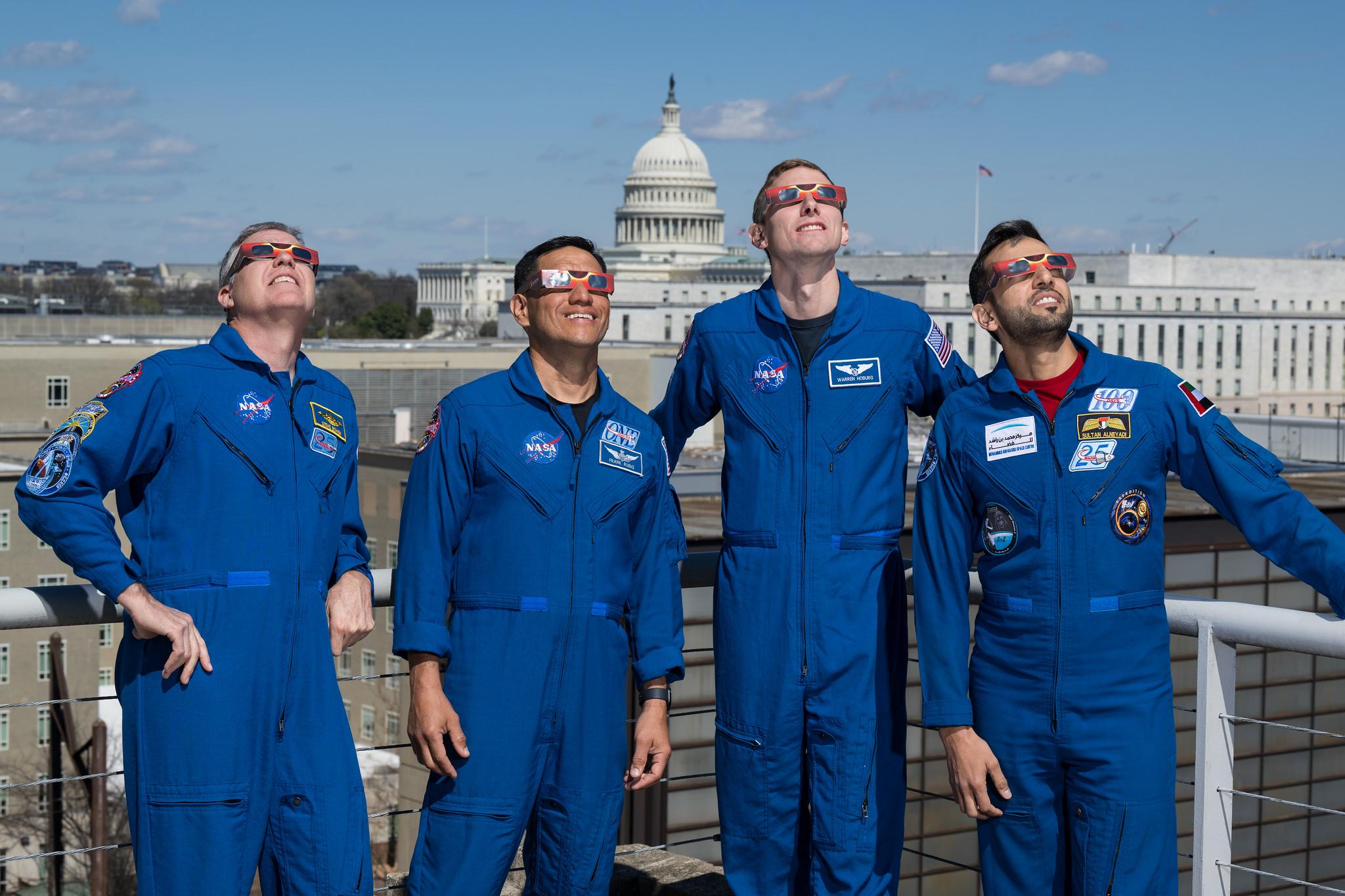 NASA's ready for the Great American Eclipse, but you don't have to be an astronaut to contribute to solar research. (NASA / Aubrey Gemignani)
NASA's ready for the Great American Eclipse, but you don't have to be an astronaut to contribute to solar research. (NASA / Aubrey Gemignani)
Total eclipses are a great opportunity for scientists to get a better look at the sun, without the brightness of the sun itself spoiling the view. The sun’s atmosphere, or corona, will be researchers’ primary focus during the eclipse, but plenty of other projects are in the works, some of which will draw on citizen science.
Among the ways to participate:
— The Eclipse Soundscapes Project, funded by NASA, is revisiting a nearly 100-year-old study of the ways eclipses affect wildlife. There are multiple ways to contribute, from observing to analyzing data.
— The SunSketcher project will contribute to scientists’ understanding of the shape of the sun. Download a smartphone app, watch a tutorial, and join the effort.
— The Globe Observer project aims to answer questions about the ways an eclipse changes atmospheric conditions. When the sun is blocked by the moon, what happens to the temperature, clouds, wind, etc.? Observations from outside the path of totality will help provide comparison data.
Watch a special episode of NOVA – Great American Eclipse – on WTTW on Wednesday, April 3 at 7 p.m. and streaming on our website anytime after the premiere.
Contact Patty Wetli: @pattywetli | (773) 509-5623 | [email protected]

